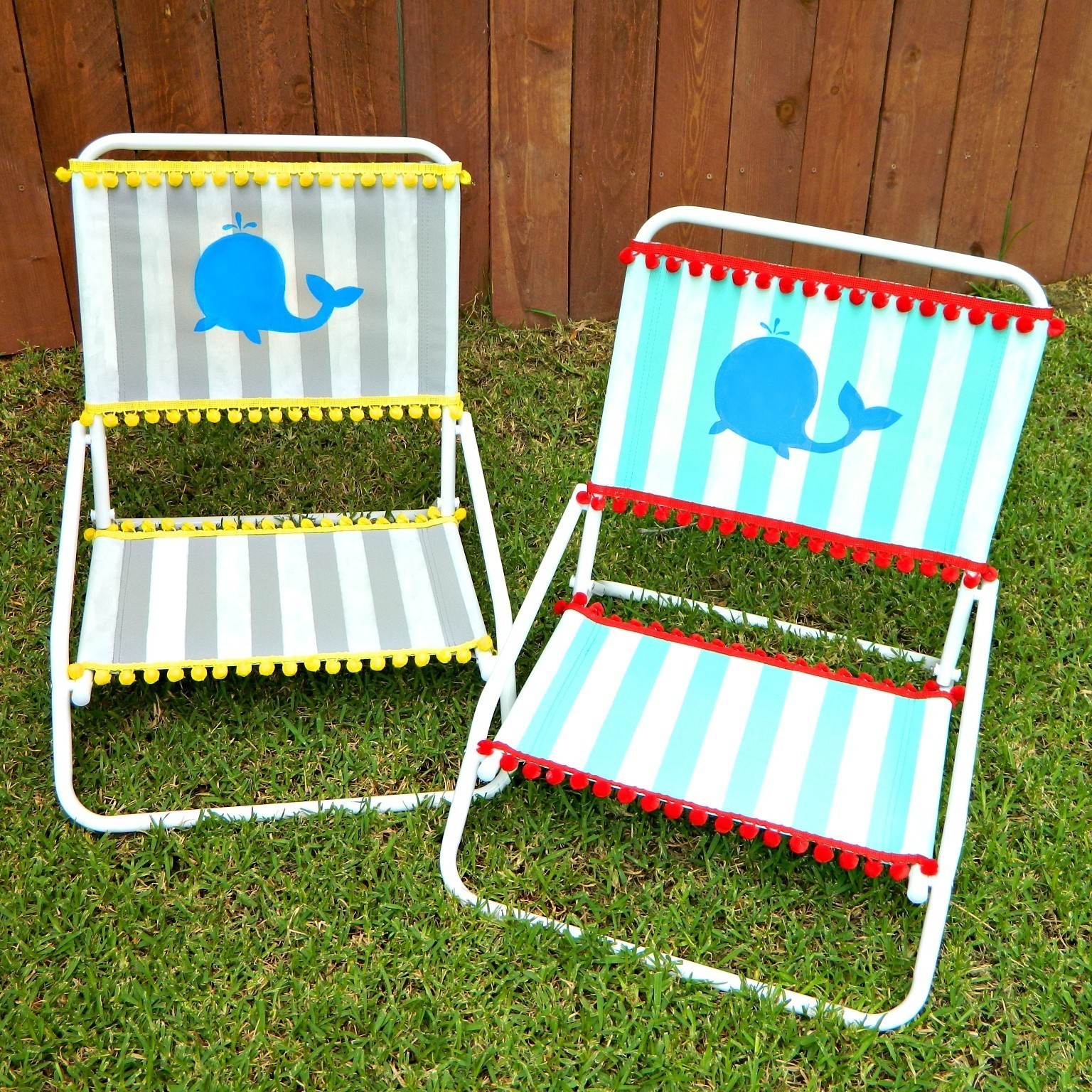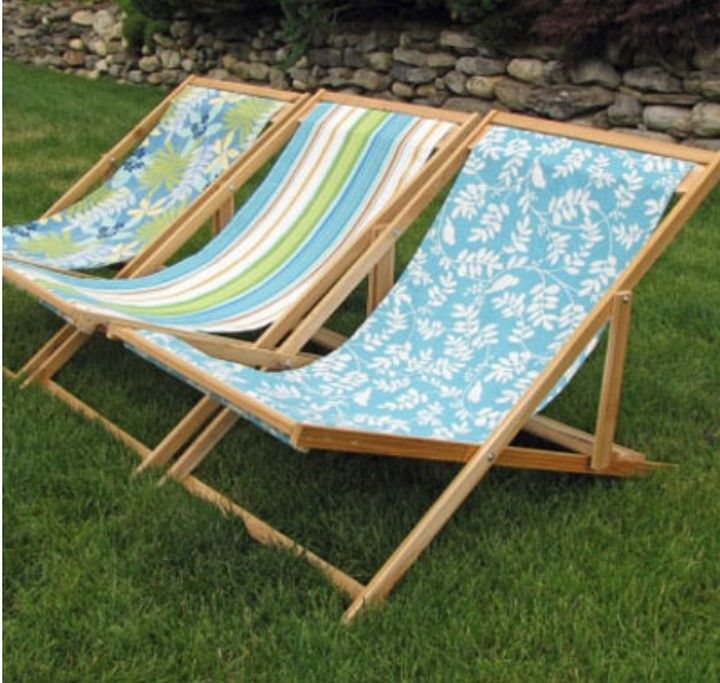Materials and Tools: How To Make Beach Chair

Building a beach chair requires careful consideration of the materials and tools you’ll use. The right materials will ensure your chair is durable, comfortable, and able to withstand the elements, while the right tools will help you build it efficiently and safely.
Materials for Beach Chair Construction
The materials you choose for your beach chair will influence its durability, comfort, and overall style. Here are some common materials used in beach chair construction, along with their properties and advantages:
- Aluminum: Lightweight, strong, and resistant to rust. Ideal for the frame of the chair, especially for beach use due to its corrosion resistance.
- Steel: Strong and durable, but heavier than aluminum. Can be used for the frame, but may be less suitable for beach use due to potential rusting.
- Wood: Provides a natural, warm aesthetic. Can be used for the frame or the seat and backrest, but requires proper treatment to resist moisture and decay.
- Fabric: Used for the seat and backrest, providing comfort and support. Choose a fabric that is durable, water-resistant, and UV-resistant for beach use. Options include canvas, mesh, or polyester.
- Plastic: Lightweight, affordable, and easy to clean. Can be used for the frame, seat, or backrest, but may not be as durable as other materials.
Tools for Building a Beach Chair
Having the right tools will make the building process smoother and more efficient. Here’s a list of essential tools:
- Measuring tape: Essential for accurate measurements of the chair’s dimensions.
- Saw: Used to cut wood or metal for the frame. A hand saw, circular saw, or miter saw can be used depending on your project needs.
- Drill: Used to create holes for screws or bolts, and to attach fabric to the frame.
- Screwdriver: Used to fasten screws or bolts.
- Wrench: Used to tighten nuts and bolts.
- Clamps: Used to hold pieces of wood or metal together while you work.
- Sandpaper: Used to smooth rough edges and prepare surfaces for painting or staining.
- Safety glasses: Protect your eyes from flying debris.
- Work gloves: Protect your hands from cuts, splinters, and rough surfaces.
Selecting High-Quality Materials and Tools
Investing in high-quality materials and tools will result in a durable and comfortable beach chair. Here are some tips:
- Choose materials that are resistant to weather and wear. Aluminum, treated wood, and durable fabrics are good choices.
- Look for tools that are well-made and comfortable to use. This will make the building process easier and more enjoyable.
- Consider your budget. There are a variety of materials and tools available at different price points.
- Read reviews and compare prices. This will help you find the best value for your money.
Construction Techniques

The construction of a beach chair frame involves selecting appropriate materials and employing suitable techniques to ensure strength, durability, and comfort. Various materials are commonly used, each with unique properties and advantages.
Frame Construction Methods
The choice of frame construction method depends on the desired strength, weight, and aesthetic appeal of the beach chair.
- Wood Frame Construction: Wooden frames are often favored for their natural beauty and warmth. Hardwood species like oak or maple offer durability and resistance to warping. The construction process involves cutting and joining wood pieces using techniques such as mortise and tenon joints, dovetail joints, or screws. The frame is then sanded and finished with a protective coating like varnish or paint.
- Metal Frame Construction: Metal frames, commonly made from aluminum or steel, provide strength, lightweight, and rust resistance. They are typically constructed using welding or riveting techniques. Aluminum frames are preferred for their lightweight and corrosion resistance, while steel frames offer superior strength.
- Plastic Frame Construction: Plastic frames are gaining popularity due to their affordability, durability, and ease of maintenance. They are typically molded into shape using injection molding techniques. Plastic frames are lightweight, waterproof, and resist corrosion, making them ideal for beach use.
Seat, Back, and Armrest Construction
The comfort and stability of a beach chair are significantly influenced by the construction of its seat, back, and armrests.
- Seat Construction: The seat can be made from various materials, including fabric, mesh, or plastic. Fabric seats provide comfort and breathability, while mesh seats offer good ventilation and quick drying. Plastic seats are durable and easy to clean. The seat is typically attached to the frame using straps, screws, or rivets.
- Back Construction: The back of a beach chair is designed to provide support and comfort. It can be constructed from fabric, mesh, or plastic. The back is typically attached to the frame using straps, screws, or rivets. The angle of the back can be adjusted to provide different levels of support.
- Armrest Construction: Armrests are designed to provide additional support and comfort. They can be made from wood, metal, or plastic. Armrests are typically attached to the frame using screws or rivets.
Assembly Process
The assembly of a beach chair involves connecting the various components, such as the frame, seat, back, and armrests. The specific steps involved may vary depending on the design and construction method of the chair.
- Frame Assembly: If the frame is made of wood, the pieces are typically joined using mortise and tenon joints, dovetail joints, or screws. Metal frames are typically constructed using welding or riveting techniques. Plastic frames are molded into shape using injection molding techniques.
- Seat and Back Attachment: The seat and back are typically attached to the frame using straps, screws, or rivets. The straps can be adjusted to provide different levels of tension.
- Armrest Attachment: Armrests are typically attached to the frame using screws or rivets.
Design Considerations

A comfortable and functional beach chair is a crucial element for enjoying a relaxing day at the beach. The design of a beach chair plays a vital role in ensuring comfort, functionality, and aesthetics. This section delves into the key design elements that contribute to an enjoyable beach experience.
Types of Beach Chairs
The type of beach chair you choose will depend on your individual needs and preferences. Here are some common types of beach chairs:
- Folding chairs: Folding chairs are compact and portable, making them easy to transport and store. They typically feature a lightweight frame and a simple folding mechanism, allowing for quick setup and breakdown. Folding chairs are ideal for casual beach outings and are generally more affordable than other types of chairs.
- Reclining chairs: Reclining chairs offer greater comfort and adjustability. They allow you to recline back to a comfortable position, providing optimal relaxation. Some reclining chairs also feature adjustable headrests and footrests for personalized comfort.
- Portable chairs: Portable chairs are designed for easy carrying and portability. They often feature lightweight materials and compact designs, making them perfect for traveling or beach trips where space is limited. Some portable chairs even come with carrying bags or straps for convenient transport.
Seat Height
Seat height is an important consideration for comfort and ease of use. A chair with a seat height that is too low can be difficult to get in and out of, while a chair with a seat height that is too high may feel uncomfortable or unstable.
The ideal seat height for a beach chair is typically between 16 and 18 inches, allowing for comfortable sitting and easy entry and exit.
Backrest Angle, How to make beach chair
The backrest angle is crucial for providing support and comfort. A chair with a backrest that is too upright can strain your back, while a chair with a backrest that is too reclined can feel unstable.
A backrest angle between 100 and 120 degrees is generally considered comfortable, offering sufficient support while allowing for a slight recline.
Armrest Positioning
Armrests should be positioned at a comfortable height and width. Armrests that are too high can restrict movement, while armrests that are too low may not provide adequate support.
The ideal armrest position is at a height that allows for relaxed arm placement while providing sufficient support for the elbows and forearms.
Creative Design Elements
Incorporating creative design elements can enhance the aesthetics and functionality of a beach chair. Here are some ideas:
- Built-in Cup Holders: Cup holders are a practical addition, providing a convenient place to hold your drinks.
- Storage Pockets: Storage pockets are useful for keeping small items organized, such as phones, keys, and sunscreen.
- Sunshades: A built-in sunshade can provide protection from the harsh sun.
- Colorful Fabrics: Bright and colorful fabrics can add a touch of personality and style to your beach chair.
How to make beach chair – The old craftsman, his weathered hands tracing the contours of the wood, whispered of a secret ingredient for the perfect beach chair. “It’s not just the wood,” he said, his voice raspy with age, “but the spirit of the place you wish to be.” He pointed to a faded photograph of a beach, a single palm tree swaying in the breeze.
“The beach chair palm tree , they call it. It whispers secrets of the sun and sand, and infuses the chair with its essence.” With a knowing smile, he added, “That’s how you make a beach chair that truly carries you away.”
Crafting a beach chair can be a satisfying project, demanding careful attention to detail and a touch of ingenuity. But if you seek a ready-made solution, consider the copa backpack beach chair , a compact and convenient option for those who prefer to simply relax.
The chair’s clever design seamlessly folds into a backpack, making it effortless to carry and store. Whether you choose to build your own or opt for a pre-made solution, the beach chair remains an indispensable companion for a day of sun and sand.
